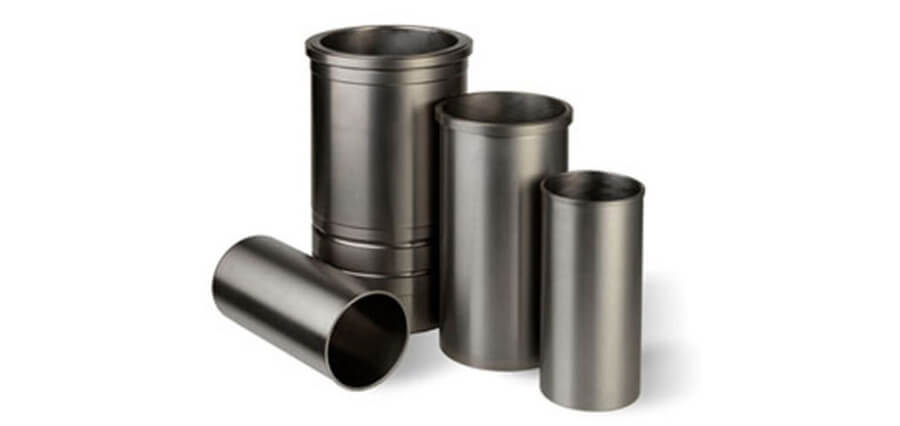The Cylinder Liners are responsible to ensure that the hot gasses circulating in the engine do not harm the engine’s interior parts. Because of the crucial role that they play, you must replace cylinder liners from time to time. It will help you save time and money that you would otherwise have to spend on the engine’s maintenance. However, how will you know when you need to change these liners? After removing and cleaning the cylinder liner, assess the quality of your engine by executing the following process:
The first step is to determine whether the rebuilt element uses wet or dry liners. Dry liners do not require a watertight seal and can easily be pulled out (and a new liner can be pinned into its place). Wet liners have slots carved into them where O-ring seals can be fitted to avoid water leaks into the cylinder.
You must use the proper method for detaching the Fabauto liners. If the right tools and techniques are not used, great damage may be inflicted to the cylinder liner and cylinder block. It’s crucial to remember that they must be stored straight while removing cylinder liners from a motor.
When cylinder liners are kept on their sides for an extended period, they can become twisted, making insertion difficult or impossible. If you’re going to reuse cylinder liners, make sure they’re labeled so you can put them back in the cylinders you took them out from. If you’re not going to install the cylinder liners right now, gently lube them with precise machine lubricating oil and keep them straight in a clean, dry spot. It is necessary to clean the liner before checking it. To know more about it, check this out.
After that, it’s time to look through the liner. Look for breaks, freeting, or scoring on the cylinder liner. If there is any cracking, fretting, or scratch on the cylinder, it should be removed. If this isn’t the case, continue checking for sonic erosion on the liner.
Low cooling system care causes erosion. It will start to eat gaps in the cylinder lining if not repaired. Water may be blown out of the radiator due to combustion gasses. When the motor is disrupted, it can also lead oil in the coolant or water to flow into the cylinder.
The liner must be changed if cavitations are detected. It’s worth noting that if new piston rings are being replaced, you should fit a new cylinder liner as well. When putting in new pistons or cylinder liners, it’s crucial to check the piston and cylinder liner ranges.
Causes for crushed, broken, chipped, and deformed liners
Weak cooling, wrong piston or pistons fit, improper fitting, foreign objects in the combustion area, or erosion and rust can all lead cylinder liners to break. Poor cooling, usually caused by a lack of cooling channels, can result in hot patches in the liners, leading to liner collapse due to thermal strain.
Hot spots can be caused by scale formation on the cooling channel walls of liners; damp liners are also prone to scale growth. Neat contact surfaces between the liners and the cylinder block are needed to properly dry liners. Dust between these sides creates air gaps, which are poor thermal conductors. Heat is also resisted by oil or lubricant films on these contact areas. If a liner is not inserted correctly, it might lead to disruption, wear, or damage.
Metal chips, nicks, or burrs, as well as improper filets, can cause poor liner seating. Scored cylinder liners can get scored (scratched) and show shallow or deep marks on the surface. Due to most liner damage, there will be dents on the cylinder and piston rings. Low piston ring or compressed pressure and rapid piston ring wear are signs of scoring.
A thorough check is the most effective way of detecting scoring. If greasing gear (filters, strainers, and centrifuges) is adequately kept, You can avoid scoring due to insufficient lubrication or dust in the lube oil. Lube oil must be purified in line with agreed protocols using various means.
The motor’s performance is harmed by these damages, which require maintenance. Cracked piston rings, a faulty piston, poor cooling, incorrect lubrication, or the influx of foreign particles or objects can all lead to scored cylinder liners. Dirt is sucked into an engine cylinder blended with the oil to form an effective but unpleasant honing compound that can cause severe damage. It is impossible to overstate the value of keeping the air intake clean. Another measure to consider when replacing a cylinder head is to ensure no metallic chips, rings, bolts, screws, or tools left in the cylinder. Scoring can be noticed on the liner surface as shallow or deep scrapes.
Conclusion
There will be marks on the engine and piston rings due to most liner scoring. Low firing or compressed pressure, as well as piston ring wear, are signs of scoring. Visual check is the most efficient method for detecting scoring. Hope you are now aware of how to check the liner’s defects and when to replace them.
| Click Here For More News and Blog |


